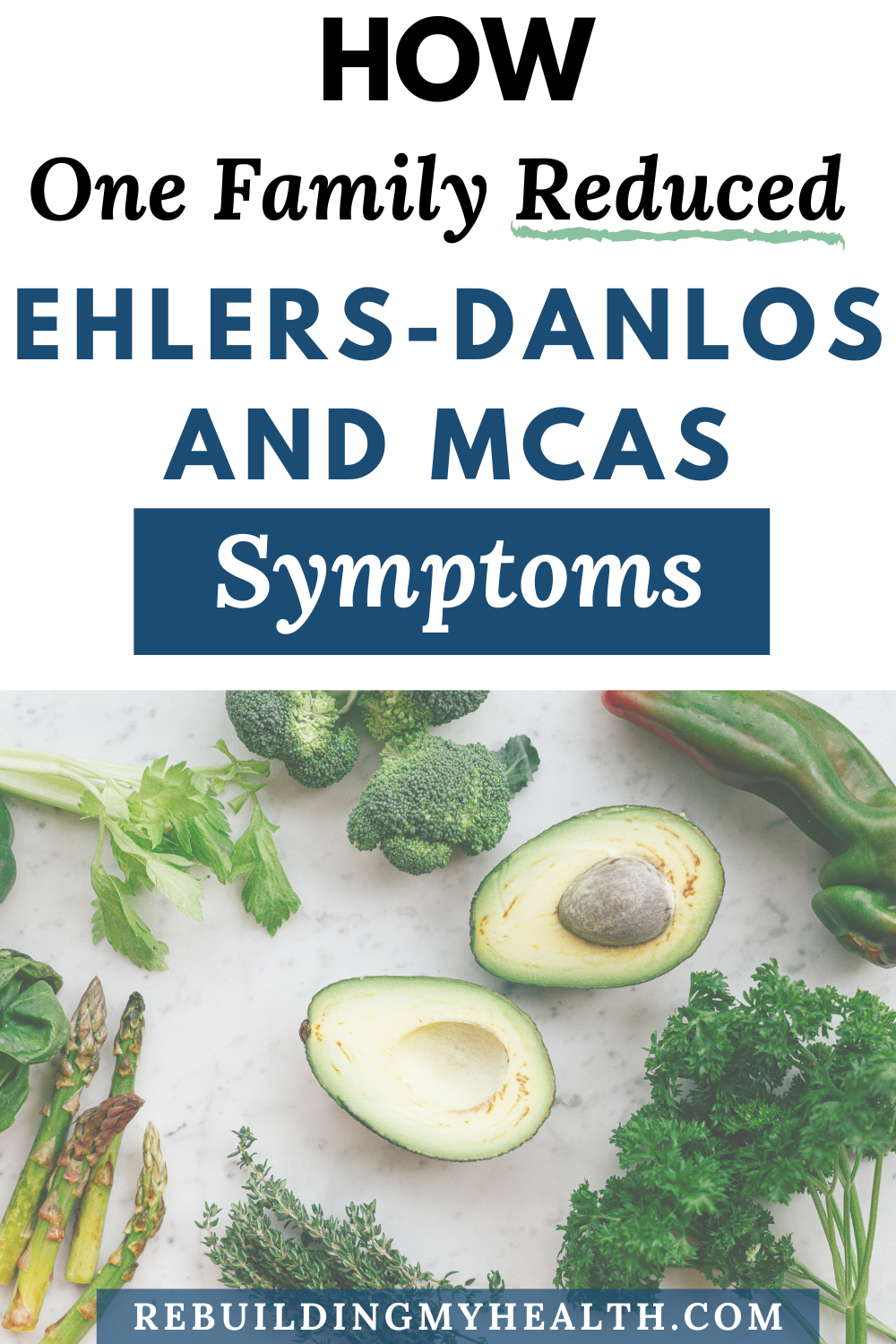Family Eases Ehlers-Danlos Syndrome, and More, with Diet, Exercise and a Chemical-Free Household
“Evaluate your diet and the daily products you use in the home and body because cleaning those things up has been the biggest game-changer for our family.”
– Rebekah Lara
For years, the Lara family struggled with unexplained health challenges. And it would take many frustrating years to learn the causes: the triple combination of Ehlers-Danlos Syndrome (EDS), mast-cell activation syndrome (MCAS) and postural orthostatic tachycardia syndrome (POTS).
Symptoms had first affected Rebekah, a mother of three girls, who had lived for decades before getting answers. Then, after exhaustive searching, they learned that their daughter, Emmalene, was affected as well.
Similar symptoms in the two younger girls led them to believe they too had EDS, MCAS and POTS.
It’s been a long, arduous, and at times scary struggle that still continues. But the Laras have found natural approaches to at least reduce the severity of their conditions.
Finally, an Ehlers-Danlos Syndrome Diagnosis
The family’s oldest daughter Emmalene, now 10, has struggled much of her life to feel well. Beginning at nine months, she had difficulty eating, first with breast- and bottle-feeding and then with table food. And she resisted drinking as well.
“She was not able to eat enough to grow,” Rebekah says. “She would eat about 10 Cheerios in an hour. At that rate, she was not getting enough calories.”
The family consulted gastroenterologists, allergists, speech therapists, occupational therapists – anyone who might be able to help Emmalene eat better. At one point, they turned to a feeding tube to ensure she was getting enough hydration and nutrients.
At the same time, she suffered from chronic constipation. With that mix of symptoms, and with other testing, a motility specialist suspected Ehlers-Danlos Syndrome.
Finally, when Emmalene was seven, a geneticist diagnosed her with EDS.
Add to the List… MCAS and POTS
The EDS diagnosis was a break in a years-long mystery for the family. Until that point, Rebekah had never connected her own lifelong joint pain with what her daughter was experiencing.
But Emmalene’s diagnosis led the geneticist to diagnose Rebekah as well.
Suddenly, symptoms in the youngest two girls also made more sense. Her middle daughter suffered from seizures, sleep problems, neurological issues and eating challenges as well.
While only Rebekah and Emmalene received an official Ehlers-Danlos Syndrome diagnosis, the other two are suspected of having EDS as well. Their particular form of the disorder, hypermobility (hEDS), is characterized by joint hypermobility, skin that bruises easily, and chronic muscle and bone pain.
Adding to the family’s challenges, all four were additionally found to have MCAS and POTS, also called dysautonomia.
Those with MCAS experience symptoms of anaphylaxis, such as swelling, hives, low blood pressure, difficulty breathing, and more, when exposed to triggers. Mast cells are allergy cells associated with immediate allergic reactions.
For Rebekah, MCAS shows up as extreme heat sensitivity – at times putting her into anaphylactic shock, even while doing something routine like mopping the floor. Her middle daughter’s MCAS expresses as hives.
Rebekah recalls that, as babies, all three girls showed skin reactions when they touched clothing washed in certain detergents. The same went for chemicals and fragrances in all manner of household products.
With POTS, also called dysautonomia, their blood flow is affected. Rebekah and the girls experience light-headedness and a rapid increase in heartbeat when they stand from a reclining position.
Nixing Chemical Cleaners and Body Care Products
Motivated to help her daughters and herself, Rebekah researched ways to reduce the symptoms of all three conditions.
For MCAS in particular, she learned, they had to carefully manage their exposure to all chemicals, from cleaners to body care products to foods.
Instead of detergents and cleaners, they use microfiber cloths for household cleaning. They also ditched soap, instead using Norwex cloths, which Rebekah says work even better than soap.
Rebekah ditched her anti-perspirant for crystal deodorant after she found the baking soda in many natural deodorants to be irritating.
And she’s gradually found more natural skincare options, particularly through sites such as Beautycounter.
A Mostly Plant-Based Diet
Diet also came into play. Rebekah tried a 21-day cleanse through Simple Green Smoothies, and saw her hives and rashes disappear.
Beyond that, the once-vegetarian family added some meat in their diet once the girls showed signs of disordered eating. However, Rebekah estimates their diet remains about 90 percent plant-based.
Rebekah also cut caffeine and sugar, reduced dairy, and upped her water consumption.
“I have noticed a difference in how I feel with diet,” she says. “Since eating more plant-based, I have more energy and it’s helped with my dysautonomia symptoms.”
And the family is mostly gluten-free.
“We tried removing gluten, dairy and soy to see if gastrointestinal issues improved, but it took out too many calories,” Rebekah says. “My daughters’ food refusal has made it hard. It’s a balancing game.”
Emmalene, suspected of also having a mitochondrial condition, also drinks a powdered supplement with 33 ingredients designed to help her mitochondria function more effectively.
“Her energy level and ability to get through the school day are better,” Rebekah says.
They’re not out of the woods, however, as they are still searching for answers for Emmalene, who experienced a frightening episode of multi-organ failure 18 months ago.
Physical Therapy and Pilates for EDS
Rebekah also found a physical therapist with Ehlers-Danlos Syndrome to help her reduce her pain through movement.
“She works to help me strengthen my core and other muscles to help stabilize my joints, especially the areas that need the most help like my neck and back,” she says.
She sees the PT weekly and does a daily program as part of her morning routine.
She also turns to Pilates to strengthen her core, decrease pain, and increase energy and endurance.
“Walking also helps me get some low-impact cardio and does not stress my joints as much as other exercise,” she adds.
Game-Changing Changes
With all these changes, the Lara family has reduced or eased a number of symptoms…
– Skin reactions
– Gastrointestinal issues
– Fatigue
– Pain
It’s taken time to clean up their diet and lifestyle, but it has been worth it.
“Evaluate your diet and the daily products you use in home and body because cleaning those things up has been the biggest game-changer for our family,” Rebekah adds.
Read more about how to clean your home without chemicals and find other clean-living tips on Rebekah’s blog, Simply Living Green.
If you enjoyed this story, you might also like: Ohio Woman Halts Mast Cell Activation Syndrome, Lyme and More.
The information on this site is for educational and inspirational purposes only and is not intended to replace the advice of qualified professionals. Keep in mind that what works for one person may not work for another. Always consult your healthcare practitioners before beginning new approaches or treatments. Some links on Rebuilding My Health may be affiliate links. This means that we may receive a commission - with no additional cost to you - if you make any purchases using those affiliate links. Rebuilding My Health is a participant in the Amazon Services LLC Associates Program. Learn more.



